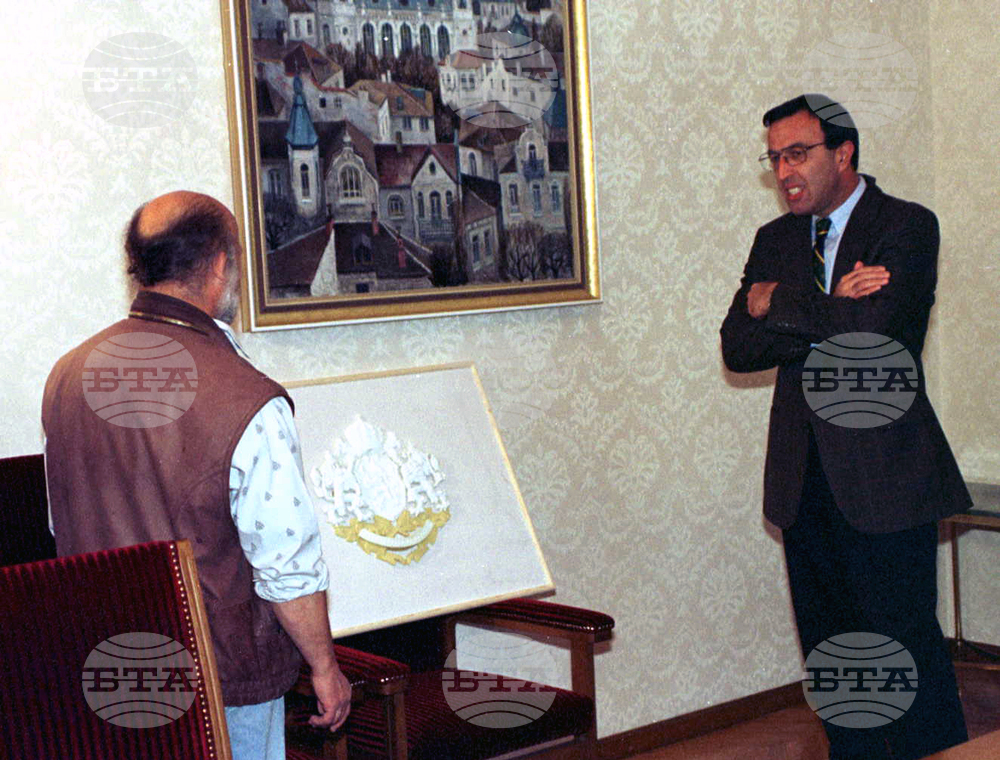site.btaJuly 31, 1997: 38th National Assembly Approves Design of Bulgaria's Post-Communist National Emblem


On July 31, 1997, 38th National Assembly adopted the National Coat of Arms of Bulgaria Act. It also approved the design, submitted by sculptor Georgi Chapkunov and artist Kiril Gogov, who "embedded" the symbol and attributes of statehood in the coat of arms.
Bulgarian politicians took seven years to reach consensus on the design of the crest.
Here's how BTA's English-language Daily News covered those events in 1997:
Bulgaria's National Emblem Design Codified
Sofia, July 31 (BTA) - On the last day of its first session Thursday, the National Assembly approved the design of Bulgaria's post-communist national emblem, a modernized version of the state crest used between 1930 and 1946. One hundred and seventy-seven MPs of all parliamentary groups voted in favour of the bill, only 16 voted against, and 29 abstained.
The design of the coat of arms represents a gold lion rampant crowned on a dark red field in the shape of a shield, surmounted by a large arched crown with five crosses rising from the circlet and another cross on its summit. This crown is prototyped on the regalia of the Bulgarian rulers of the Second Bulgarian Empire (1186-1396). The supporters, two lions rampant crowned, face each other across the shield. They stand upon two crossed oak branches with acorns. The motto, "Unity Makes Strength," is in gold lettering on a white ribbon with tricolour edging, suspended from the oak branches with its ends enveloping the ends of the branches.
Bulgarian politicians took seven years to reach consensus on the design of the crest. The country's new Constitution, enacted in 1991, abolished the national emblem used under the communist regime, which featured a rampant lion against a sky-blue background within a wreath of wheat ears below a red five-pointed star and above a cog-wheel and a red ribbon with tricolour ends, bearing the dates "681" (the establishment of the Bulgarian State) and "1944" (the communist takeover).
A national competition for a design of the new coat of arms was announced in 1992. The winning design, submitted by sculptor Georgi Chapkunov and artist Kiril Gogov, was a modernized version of the Bulgarian emblem used between 1930 and 1946.
Back then experts opposed that version, arguing that the crown symbolized monarchy as a form of government and citing the new Constitution which describes the emblem simply as "'Gules,' a lion rampant 'or'." In 1995 Zhan Videnov's Socialist Government approved and introduced before parliament a hastily drawn design of a coat of arms which followed the constitutional text to the letter. Most of the intellectuals and the general public disapproved of that representation as artistically
inadequate. Nevertheless, the Socialist-dominated parliament voted the bill through, but President Zhelev vetoed it. Back before the legislature, the emblem failed to garner enough votes to override the presidential veto.
The approval of the design on Thursday became possible after long-drawn consultations between the political forces held by President Peter Stoyanov. All parliamentary groups made concessions, and the designers replaced the Bourbon fleurs-de-lys in the crown by crosses. The Socialists resented that element, seeing it as a symbol of the House of Saxe-Coburg-Gotha which ruled Bulgaria until the abolition of the monarchy in 1946.
The MPs who insisted that the constitutional description of the emblem should be amended also made a compromise. They accepted a Constitutional Court interpretation of 1995, according to which the verbal description cannot be comprehensive. The constitutional judges determined that Parliament was competent to amplify that description by statute. At a news conference after the end of the first session of the incumbent 38th National Assembly, its Chairman Yordan Sokolov expressed the view that the Constitution should better be amended after the fact if a consensus on the matter is reached. That would ensure stability for the coat of arms, Mr Sokolov argues, "lest each successive parliament consider itself obligated to revise it." A constitutional amendment requires the affirmative voted of two thirds of all 240 MPs.
Immediately after the vote, President Stoyanov personally hung a colour imprint of the emblem on the facade of the President's Office. At the President's request the designers will execute a bas relief which will be installed over the main entrance.
/MT/
news.modal.header
news.modal.text